The White Angel

Brief Synopsis
Cast & Crew
William Dieterle
Kay Francis
Ian Hunter
Donald Woods
Nigel Bruce
Donald Crisp
Photos & Videos
Film Details
Technical Specs

Synopsis
Florence Nightingale, a young Victorian, is stunned to discover that hospital nurses are often women of low morals and no training. Frustrated by her uselessness as a woman of polite society, Florence decides to go to Europe to train as a nurse in order to reform medical care. On her return, however, she finds that no hospital will hire her. When the Crimean War is declared, Florence convinces the British Ministry of War that she should undertake a reorganization of hospitals at the front. Although wartime nurses traditionally have been male, Florence organizes a contingent of thirty-eight dedicated women. Dr. Hunt, the doctor in charge of the hospital at Scutari, thinks these women are merely do-gooders and gives them the most difficult assignments to discourage them, but Florence is equal to any task, and soon conditions are vastly improved for the wounded and sick. London Times reporter Mr. Fuller makes Florence's work known to the British at home, and Henry Wadsworth Longfellow writes the poem "Lady with the Lamp" in her honor. Hearing reports that conditions at the front are terrible, Florence leaves a few trusted nurses behind and heads off to take charge. At Balaklava, she is faced again with Hunt's ill will. Finally Lord Raglan, the commander in chief, intervenes in her favor. Florence takes her nursing into the trenches where she catches cholera and almost dies. Despite Hunt's efforts to prove that women nurses are incompetent, the death rate under her administration is drastically reduced, and Hunt becomes Florence's reluctant defender. After the war, Florence tries to establish nursing schools in England, but encounters the same obstacles as in war time. Finally Queen Victoria hears her pleas and presents her with a commemorative brooch, making her the first woman to receive the Order of Merit.

Director
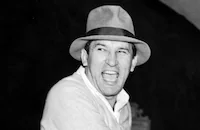
William Dieterle
Cast

Kay Francis
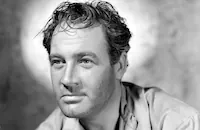
Ian Hunter
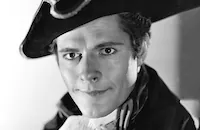
Donald Woods
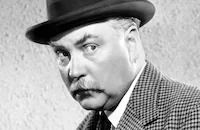
Nigel Bruce
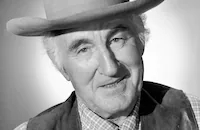
Donald Crisp

Henry O'neill
Billy Mauch
Charles Croker-king
Phoebe Foster
George Curzon
Georgia Caine
Ara Gerald

Halliwell Hobbes

Eily Malyon

Montagu Love
Ferdinand Munier
Lillian Cooper
Egon Brecher
Tempe Piggott
Barbara Leonard

Frank Conroy

Charles Irwin
Clyde Cook
Milton Owen

Robert Stevenson
E. L. Fisher-smith
Hugh Gee
Harry Allen
George Kirby

Harry Cording

Gaby Fay
Alma Lloyd
Daisy Belmore
May Beatty
Katherine Clare Ward
Cecil Weston
Ann Shaw
Dorothy Arville
Helena Phillips Evans

Lawrence Grant
Yorke Sherwood
Herbert Evans
Nelson Mcdowell
Eric Wilton
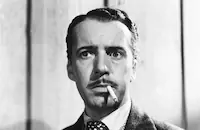
Boyd Irwin
Lew King
John Mccallum
Gunnis Davis
Lowden Adams
George Bunny
Fred Walton
John Power
Robert Bolder
James May
Arthur Turner Foster

Paul Panzer

Ian Wolfe
Gardner James
John Rogers
Reginald Sheffield
Leo Mccabe
Helena Grant
Cyril Thornton
Emmy Weinniemach
Elizabeth Weiner
Mary Forbes
Elspeth Dudgeon
Mrs. Wilfrid North
Vesey O'davoren
Hugh Saxon

Holmes Herbert
Lionel Pape
Gordon Hart
Joseph Tozer
Alec Harford
Maud Shearer
Doreen Munroe
Mary Gordon
Rita Carlyle

E. E. Clive
Houseley Stevenson
Jack Richardson
Douglas Gordon
William Griffith
Olaf Hytten
Robert Hale
Harold Howard
Lionel Belmore
Charles Coleman
Gerald Rogers
Frank Baker
Wilson Benge
Harry Stubbs
Dan Maxwell
George Broughton
Jimmie Aubrey
Fay Chaldecott
Sylvia Chaldecott
Edith Ellison
Crauford Kent
Robert Corey
Henry Mowbray

Wilfred Lucas
Harrington Reynolds
Frank Elliott
Neil Fitzgerald
Raymond Lawrence
Thomas Curran
Montague Shaw
Denis D'auburn
Jerry Larkin
Lillian Worth
Edith Kingdon
Zeffie Tilbury
Rose Hughes
Kit Townsend
Crew

Photo Collections
Film Details
Technical Specs

Articles
The White Angel (1936) - The White Angel
A part of the Warner Bros. stable since 1931, Francis enjoyed her greatest success in the early Depression era in romantic comedies and melodramas. A chic, worldly brunette with a cello voice, Francis brought glamour and class to her characters, who excelled in the game of romance. Whether her character suffered in love, or caused the suffering of others, she gallantly tried to do the right thing in the final reel. Her characters were generally a part of Café Society, where ladies of leisure toyed with good men's affections, or well-bred women fell hopelessly in love with ruthless businessmen or careless cads. Fanzines regularly touted Francis's fashion sense, and part of her star image required that she wear stunning gowns, stylish suits, and tasteful accessories. Her sleek, model-like figure was ideal for the long lines and dropped waists of 1930s styles. In short, Francis was the essence of the ideal modern woman, caught up in the conflicts of romance, career, and social position.
Obviously cast against type in The White Angel, Francis and Warner Bros. seemed eager for this prestigious departure from her usual roles. A period piece set in the mid-nineteenth century, the film follows Florence Nightingale from her decision to become a nurse through her horrific experiences in the Crimean War, where the wounded suffered under the primitive conditions of the hospital facilities. Nightingale experiences criticism from her upper-class friends and peers for her decision to become a nurse, and she constantly fights against the reactionary views of male doctors, hospital administrators, and war department officials. Through it all, she remains resolute and committed to her vocation. She is so committed that she turns down a marriage proposal and eschews romance. Much to her mother's chagrin, she insists on wearing the drab nurse's attire of full, gray skirt and unflattering white cap. Thus, Florence Nightingale seems to have little in common with Francis's other characters.
The White Angel was a critical and box-office failure. Both reviewers of the period and scholars of today blame the misfire on the miscasting of Francis. But, that judgment seems unfair and outdated. While women of the Depression related to stars like Francis because they provided glamorous models of the modern woman, viewers today don't have those expectations of her. Few contemporary viewers are even familiar with Francis, who has been forgotten over the decades, so they will not be disappointed that she is playing against type. Francis's performance is controlled and subdued, a style of acting suited to the character of Nightingale, who was steadfast against the tides of personal and professional criticism. That doesn't mean her performance is without emotion. When Nightingale opens the door to the hospital in Crimea, which is filthy and disgusting, she looks like she is going to cry for a split second, but she quickly pulls herself together. The subtlety in that change of expression is an example of Francis's preference for conveying emotion through her eyes.
The faults in the film have less to do with Francis's casting and more to do with the conventions of the biopic during the 1930s. Generally overwritten and overwrought, many biopics from the era have not aged well. Though the long monologues and broad, gimmicky acting tended to garner accolades and awards at the time, these films now seem leaden and tedious. The White Angel suffers more than most biopics from these weaknesses. As the reviewer for The New York Times noted, Florence Nightingale "talks, walks and thinks like a historical character. When she speaks, she is speaking for posterity."
Though Florence Nightingale does not fit Kay Francis's star image, the role does share something in common with some of her other characters. Francis's other roles represented modern womanhood in the decade after the liberating Jazz Age, just a few years after women won the right to vote, when views on womanhood were in flux between progress and tradition. Likewise, in the film, Florence Nightingale struggles with changing views of women in the nineteenth century. When Florence returns home after rigorous training in Germany, because England has no comparable nurses' school, she goes to Dr. West, a family friend, for employment. He tells her that her training will come in handy for marriage. Another character pleads with her to "marry soon and get these ideas out of your head." When she gets to the battlefields of Crimea, she is undermined by the officer in charge, who is determined to pressure her until "she goes home where she belongs." Florence modernizes the filthy army hospitals in Crimea with new ideas of sanitation and organizes the nurses for round-the-clock care of the wounded. Though Florence reduces the death rate among the wounded from 56% to 6%, the chief medical officer in the hospital at Scutari believes women to be naturally unfit, unbalanced, and incompetent. The constant comments in the dialogue against females in the work place and about women and marriage are familiar in any era in which women's roles are in flux, which gives the film a universal theme. The undue emphasis on the "miscasting" of Francis in assessments of The White Angel has detracted from more interesting readings of the film.
Unfortunately for Francis, the film marked a turning point in her position at Warner Bros. and in her career. The downward turn may have started with powerful producer Hal Wallis, who was disappointed with director William Dieterle. He blamed Dieterle for what he called Francis's emotionless performance in which he accused the actress of using the same expression no matter the circumstance. As the year 1936 progressed, the relationship between Francis and the studio deteriorated. They refused her request for certain roles; she sued them for breach of contract when she was promised the lead in Tovarich (1937), and the studio gave it to free-lancer Claudette Colbert. Harry and Jack Warner were hoping that Francis would request an early release from her contract, and when she refused, they mounted a campaign of harassment and humiliation. Francis stuck it out until her contract ran out in 1939, but her Hollywood career never recovered.
By Susan Doll
Producer: Henry Blanke Director: William Dieterle Screenplay: Michael Jacoby and Mordaunt Shairp, based on a biographical sketch by Lytton Strachey in Eminent Victorians Cinematography: Tony Gaudio Editor: Warren Low Art Director: Anton Grot Costume Designer: Orry-Kelly Original Music: Heinz Roemheld Cast: Florence Nightingale (Kay Francis), Fuller (Ian Hunter), Charles Cooper (Donald Woods), Dr. West (Nigel Bruce), Dr. Hunt (Donald Crisp), Dr. Scott (Henry O'Neill), Sir Sidney Herbert (George Curzon), Mrs. Elizabeth Herbert (Phoebe Foster), Mr. Nightingale (Charles Croker-King), Mrs. Nightingale (Georgia Caine), Tommy (Billy Mauch)
1936 B&W 75 mins.

The White Angel (1936) - The White Angel
Quotes
Trivia
Much disagreement to the origin of the source material exists. Some contemporary sources believed the source was Lytton Strachey's 1918 biographical essay in Eminent Victorians. Others contend Michael Jacoby was the author. Warner Bros. executive Hal B. Wallis contended that the life of Florence Nightingale was in the public domain, and that screenwriter Shairp did his own research. The MPAA agreed with Wallis; no source credit was necessary.
Notes
Although no literary source is credited on the film itself, contemporary sources noted that the film was suggested by Lytton Strachey's biographical essay in Eminent Victorians (London, 1918). Others credited Michel Jacoby as the original author. In a memorandum to the MPAA included in the file on the film in the AMPAS Library, Warner Bros. executive Hal B. Wallis commented that the life of Florence Nightingale was in the public domain and that screenwriter Shairp had done his own research. The MPAA concurred that no source credit was needed. According to Hal Wallis' autobiography, Robert Lord wanted to base the film on Lytton Strachey's study of Nightingale with Josephine Hutchinson as the star. A Brooklyn actress was hired to portray Queen Victoria and British actress Doris Lloyd dubbed her voice. In l9l5, a British version of Nightingale's life, called Florence Nightingale and directed by Maurice Elvey was made. It starred Elizabeth Risdon. In 1951, another British film about the nurse, The Lady with the Lamp, was produced. It was directed by Herbert Wilcox and starred Anna Neagle.














